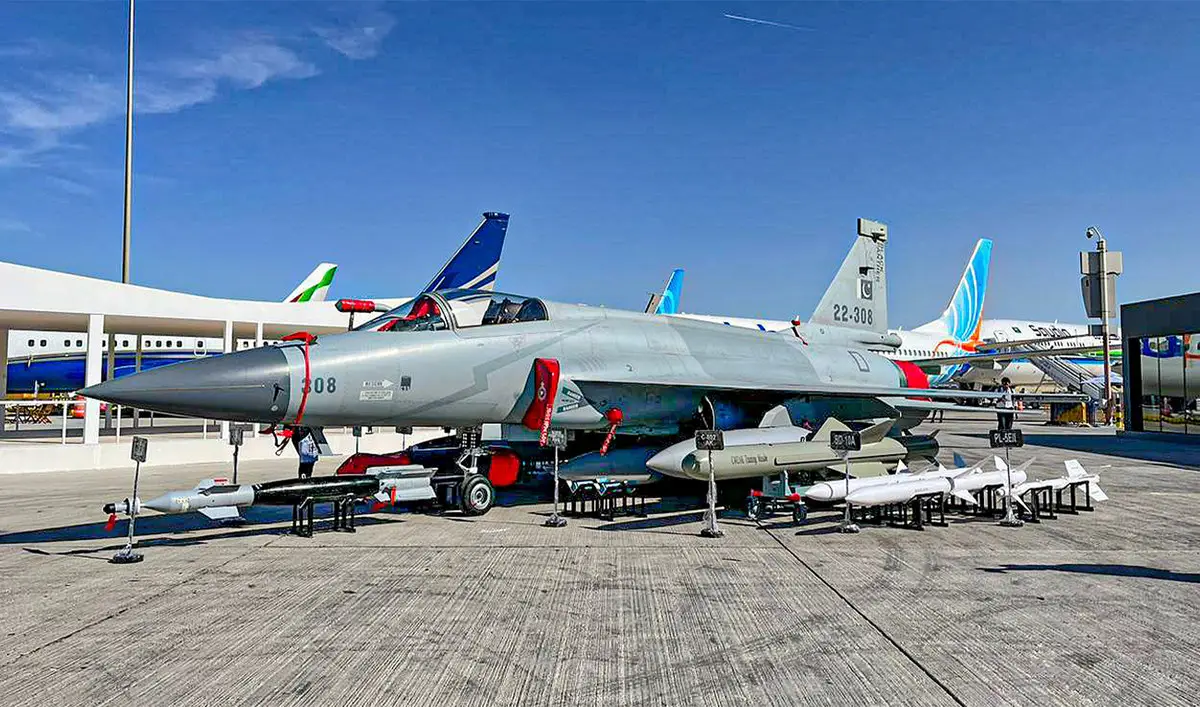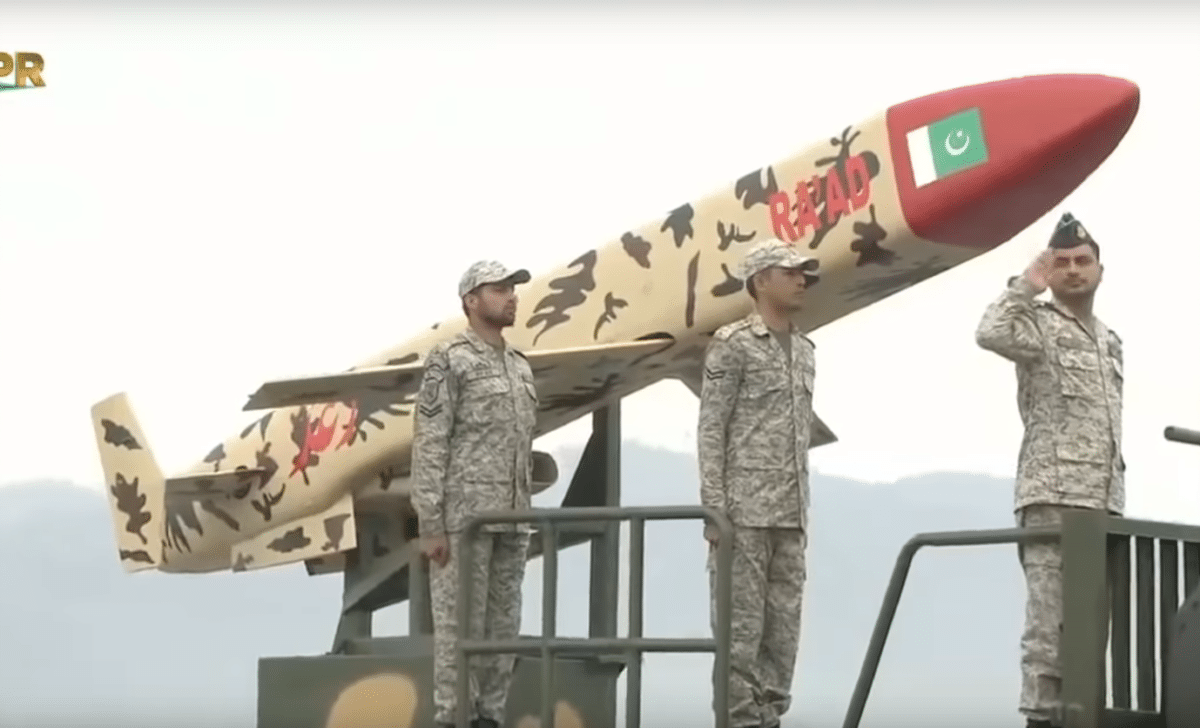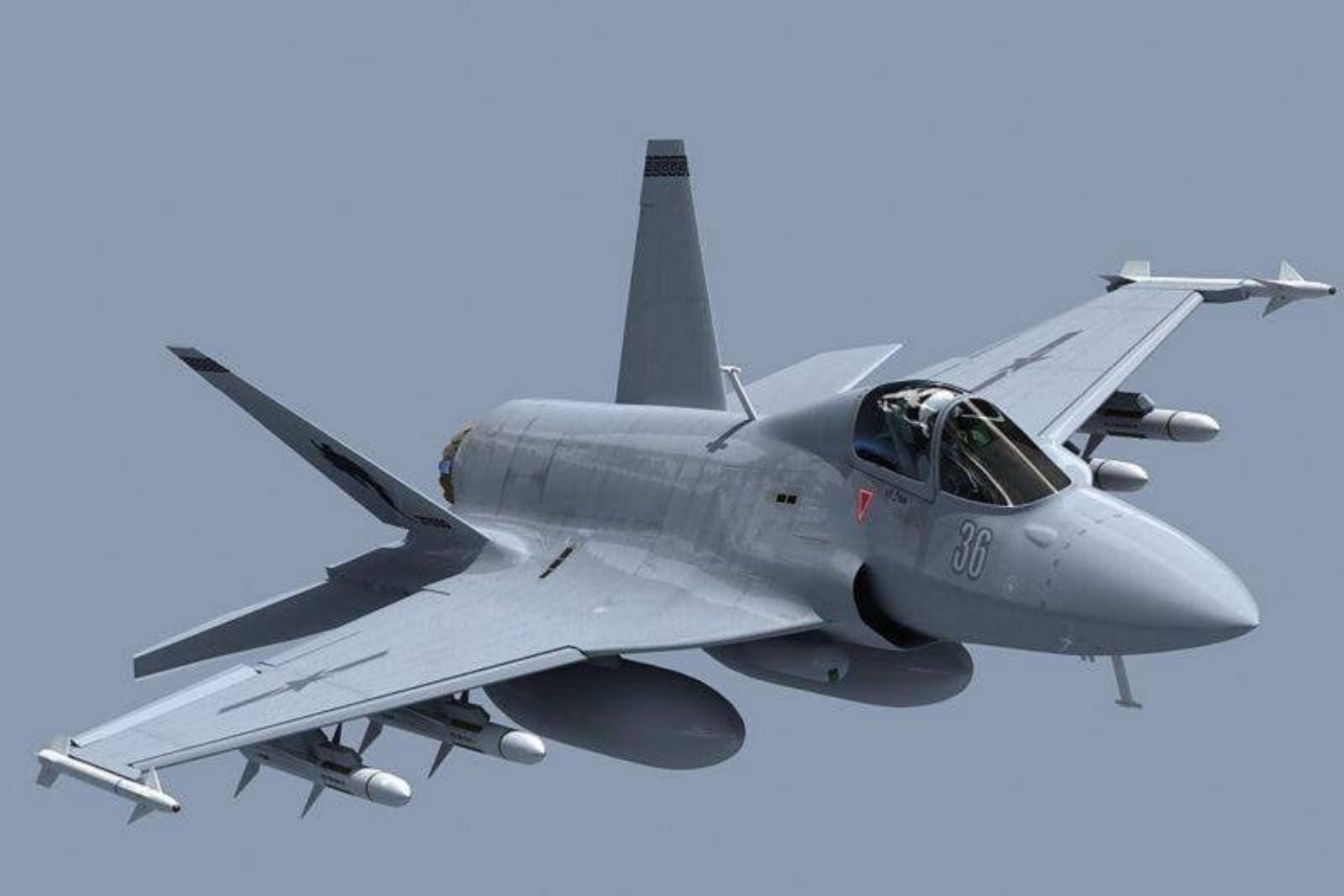JF-17 Transformed: Pakistan’s PFX Alpha Upgrade Aims to Break Dependence and Build Sovereignty
The Pakistan Air Force’s ongoing upgrade of its JF-17 Thunder fighter jets under the Operational Capability Upgrade (OCU) initiative — internally codenamed “PFX Alpha” — marks the first tangible step toward the country’s long-term ambition to develop a next-generation combat aircraft, known simply as PFX.
(DEFENCE SECURITY ASIA) – At the heart of the bustling show floor of the International Defence Exhibition and Seminar 2024 (IDEAS) in Karachi, Pakistan quietly signalled a transformative shift in its airpower doctrine.
The National Aerospace Science and Technology Park (NASTP), operating under the Pakistan Air Force (PAF), unveiled an ambitious initiative aimed at upgrading its frontline JF-17 Thunder fleet.
Dubbed the “Operational Capability Upgrade” (OCU) and internally codenamed “PFX Alpha,” the program is being positioned not merely as an enhancement effort — but as the embryonic phase of Pakistan’s next-generation fighter project, tentatively labelled “PFX.”
The JF-17 Thunder, co-developed with China’s Chengdu Aircraft Corporation, has long served as the workhorse of Pakistan’s air combat fleet — a symbol of Islamabad’s aspirations for defence industrial autonomy.
With the OCU now in motion, the platform is set to undergo a sweeping overhaul of its avionics architecture and radar systems.
Sources close to the program indicate that PFX Alpha will enable the integration of sophisticated air-to-air and air-to-surface precision-guided munitions, including homegrown assets like the Rasoob 250 glide bomb and the AZB-81LR, a long-range smart munition designed for deep-strike scenarios.
More than a technical upgrade, PFX Alpha reflects a quiet but decisive strategic recalibration.

Senior defence analysts in Islamabad believe the initiative is emblematic of PAF’s growing desire to assert sovereign control over the JF-17’s developmental trajectory — a capability historically tempered by Pakistan’s deep technological reliance on its Chinese counterpart.
Since its induction, the JF-17 has embodied a partnership of geopolitical convenience between China and Pakistan — rooted in mutual strategic calculus, especially in balancing Indian airpower.
However, behind the narrative of self-reliance, the aircraft’s critical subsystems — radar, electronic warfare, and weapons integration — have remained largely under the purview of Chinese firms such as Aviation Industry Corporation of China (AVIC) and China Electronics Technology Group Corporation (CETC).
AVIC and CETC are two of China’s most powerful state-owned defence conglomerates, both playing central roles in the country’s aerospace, electronics, and military-industrial complex.
This dependency has proven increasingly problematic as Pakistan attempts to future-proof the JF-17 against rapidly evolving regional threats and break the ceiling on indigenous innovation.
The fissures in this co-dependency became unmistakable when the Pakistan Air Force attempted to equip the JF-17 with a cutting-edge Active Electronically Scanned Array (AESA) radar.
While Pakistan had shown keen interest in Italy’s Leonardo Grifo-E, negotiations reportedly collapsed due to the unwillingness of both AVIC and Leonardo to share proprietary source codes — a stark reminder of the political and technological friction inherent in multilateral defence programs.

Recognising the need to close this capability gap, the PAF took a bold step in 2020 by establishing an in-country integration facility to manage weapons and subsystem fusion for the JF-17 platform.
Since then, it has achieved noteworthy milestones — integrating domestically produced precision munitions, as well as foreign technologies such as the ASELPOD targeting pod from Turkey’s ASELSAN, and the Ra’ad air-launched cruise missile (ALCM), a key asset in Pakistan’s strategic deterrent posture.
The PFX Alpha initiative now promises to deepen this indigenisation drive, with plans to incorporate locally developed radar systems, electronic warfare suites, and advanced avionics — and potentially, electro-optical/infrared (EO/IR) targeting capabilities, bringing the aircraft closer to contemporary fourth-plus generation standards.
Such enhancements could offer the JF-17 not just extended survivability in complex air defence environments, but also multi-domain flexibility — from precision strikes in contested zones to battlefield ISR roles in asymmetric warfare theatres like Balochistan or along the Line of Control (LoC).
Geopolitically, this effort comes at a time when the regional airpower balance is undergoing a seismic shift.

With India steadily integrating Rafale multirole fighters and pushing forward its indigenous Tejas Mk1A and AMCA programs, Pakistan’s roadmap for air dominance must evolve accordingly. PFX Alpha, in that context, is more than a capability refresh — it is a strategic necessity.
Ultimately, Pakistan’s push for autonomy in the skies through the JF-17 OCU reflects a broader realignment — one that aims to reduce vulnerability to foreign embargoes, increase modularity in system integration, and foster a sustainable domestic military-industrial ecosystem.
Whether PFX Alpha succeeds in transforming the JF-17 into a truly sovereign airpower platform remains to be seen, but the intent is unmistakable: Pakistan is now charting its own flightpath in the aerospace defence arena.
— DEFENCE SECURITY ASIA


